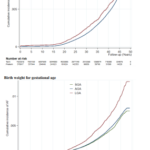パルバルブミン介在ニューロンから分泌される “サブスタンスP “が緩やかな血管拡張を促す “Substance P” secreted by parvalbumin interneurons drive slow vasodilation
2023-04-24 韓国基礎科学研究院(IBS)
韓国基礎科学院の脳神経画像研究センター所長キム・ソンギ氏らの研究チームは、この現象の秘密を発見した。彼らは、PVニューロンと呼ばれるある種の抑制ニューロンが「物質P」と呼ばれる物質を分泌し、血管拡張と脳血流の制御に責任があることを発見した。そして、PVニューロンの活動は、脳が覚醒しているか眠っているかによって制御されることが判明した。
この研究は、脳の血流量制御メカニズムに関する新たな研究方向を示唆し、不眠症や睡眠障害の治療にも可能性があるとされる。研究成果は、韓国の基礎科学院の研究者らによって公表された。
<関連情報>
- https://www.ibs.re.kr/cop/bbs/BBSMSTR_000000000738/selectBoardArticle.do?nttId=22711&pageIndex=1&searchCnd=&searchWrd=
- https://www.pnas.org/doi/10.1073/pnas.2220777120
パルバルブミン介在ニューロンの活動により、抑制による速い血管収縮と、サブスタンスPを介した遅い血管拡張が起こる Parvalbumin interneuron activity drives fast inhibition-induced vasoconstriction followed by slow substance P-mediated vasodilation
Thanh Tan Vo, Geun Ho Im, Kayoung Han, Minah Suh, Patrick J. Drew and Seong-Gi Kim
Proceedings of the National Academy of Sciences Published:April 25, 2023
DOI:https://doi.org/10.1073/pnas.2220777120

Significance
Neurovascular coupling (NVC) underlies hemodynamic-based functional magnetic resonance imaging (fMRI). While the hemodynamic response is assumed to reflect excitatory neural activity, inhibitory neurons can also play a significant role. Here, we investigated the hemodynamic responses elicited by optogenetic stimulation of parvalbumin (PV) neurons, the largest population of GABAergic interneurons in the neocortex. Under anesthesia, stimulation of PV neurons produced a pronounced biphasic hemodynamic response, with initial vascular constriction followed by prolonged dilation tens of seconds later. The ultraslow dilation was mediated by substance P (SP), and may be an important mechanism for sleep, which is crucial for maintaining brain health and preventing the development of neurodegenerative diseases involving insomnia and sleep disorders.
Abstract
The role of parvalbumin (PV) interneurons in vascular control is poorly understood. Here, we investigated the hemodynamic responses elicited by optogenetic stimulation of PV interneurons using electrophysiology, functional magnetic resonance imaging (fMRI), wide-field optical imaging (OIS), and pharmacological applications. As a control, forepaw stimulation was used. Stimulation of PV interneurons in the somatosensory cortex evoked a biphasic fMRI response in the photostimulation site and negative fMRI signals in projection regions. Activation of PV neurons engaged two separable neurovascular mechanisms in the stimulation site. First, an early vasoconstrictive response caused by the PV-driven inhibition is sensitive to the brain state affected by anesthesia or wakefulness. Second, a later ultraslow vasodilation lasting a minute is closely dependent on the sum of interneuron multiunit activities, but is not due to increased metabolism, neural or vascular rebound, or increased glial activity. The ultraslow response is mediated by neuropeptide substance P (SP) released from PV neurons under anesthesia, but disappears during wakefulness, suggesting that SP signaling is important for vascular regulation during sleep. Our findings provide a comprehensive perspective about the role of PV neurons in controlling the vascular response.


